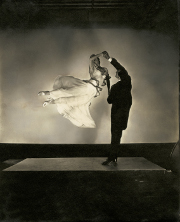 I recently watched an old interview with Madonna about the early loss of her mother and how the birth of Lourdes, Madonna’s daughter, had helped her deal with that death. During the interview, she said some thought-provoking things (yes, I am talking about Madonna, the Material Girl): as a teenager, she found herself invalidated by the women around her as she constantly searched for a reflection of herself in them — a reflection which she yearned to see in her own mother’s eyes, face and body. Ever since her mother passed away, this yearning had not been fulfilled, and her ability to truly recognize herself in another had become an impossibility. However, watching her own daughter recognize herself in Madonna, who has now taken on the role of the mother, has slowly healed old teenage wounds.
I recently watched an old interview with Madonna about the early loss of her mother and how the birth of Lourdes, Madonna’s daughter, had helped her deal with that death. During the interview, she said some thought-provoking things (yes, I am talking about Madonna, the Material Girl): as a teenager, she found herself invalidated by the women around her as she constantly searched for a reflection of herself in them — a reflection which she yearned to see in her own mother’s eyes, face and body. Ever since her mother passed away, this yearning had not been fulfilled, and her ability to truly recognize herself in another had become an impossibility. However, watching her own daughter recognize herself in Madonna, who has now taken on the role of the mother, has slowly healed old teenage wounds.
As she spoke, it struck me that this wish to see ourselves in one another is universal, whether you have lost a parent or not. Perhaps this is one reason we live in a culture of celebrity worship, where consumption of images of the “other” (those more beautiful and more successful than us common folk) is directly related to our desire to find pieces of ourselves; to say, in one way or another, that “we are just like them” — that we are all the same.
Hence my excitement over a current exhibit at the AGO that highlights the work of Edward Steichen.
In 1923, Steichen accepted the post of chief photographer for both Vogue and Vanity Fair, and his work is still renowned as breaking ground with its original style. As I passed through the exhibit earlier this week, I noticed that Steichen’s famous subjects rarely look into the camera; instead they gaze at the world outside the frame (not unlike the characters in the films of Jean Renoir, who worked during the same time period as Steichen and was the son of famous painter Pierre-Auguste Renoir). Particularly striking examples of this are the Ilka Chase portrait and Model with Art Deco Shawl. Did I see myself in these portraits? I tend to think of my own diverted gaze as a result of innate shyness. Assuming that Steichen meant for his subjects to be coy, there doesn’t seem to be much of a connection between myself and these photographic characters except that they make me question the true source of my own “bashful” gaze.
Some of us might see a more direct reflection of ourselves in the portrait of Douglas Fairbanks Jr. reclining in a pinstriped suit, head bent toward light, but I encourage anyone who makes the trip down to Steichen’s exhibit to look for themselves in each person captured on film. Perhaps if we all tried to see ourselves in each other on a regular basis — as we pass by each other in the street, grab coffee, wait in line at the bank — we might feel more connected by our common humanity. This, for me, is the purpose of all good art, including photography: its ability to reflect humanity back to itself and help those like the young, motherless Madonna to find an image to call their own.
Leanne is an associate at Heenan Blaikie LLP. She spends her free time indulging in art, film, music and literature and swears that culture tastes better than chocolate. Her column will appear every Friday here on lawandstyle.ca.
Photo by Edward Steichen, courtesy of the Art Gallery of Ontario

